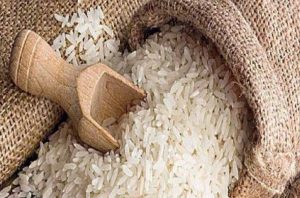
The government has decided not to allow exports of basmati rice below USD 1,200 per tonne to restrict possible “illegal” shipment of white non-basmati rice in the garb of premium basmati rice.
In a statement on Sunday, the commerce ministry said it has directed trade promotion body APEDA not to register contracts below USD 1,200 per tonne.
Existing contracts below USD 1,200 per tonne have been kept in abeyance.
A committee under the chairman of APEDA will be set up to evaluate future course of action.
Seeking to control retail prices of rice, the central government has been taking several steps to boost domestic supply.
In September last year, it banned exports of broken rice, while last month it imposed restrictions on non-basmati white rice. Last week, a 20 per cent export duty was slapped on par-boiled non-basmati rice.
With these curbs, India has now imposed restrictions on all varieties of non-basmati rice.
According to the statement of the commerce ministry, the government has issued instructions to APEDA (Agricultural and Processed Food Products Export Development Authority) to introduce additional safeguards to prevent the possible illegal exports of white non-basmati rice in the garb of basmati rice.
As per the instructions, “contracts for basmati exports with the value of USD 1,200 per MT (tonne) only and above should be registered for issue of Registration – cum – Allocation Certificate (RCAC)”.
As per the Foreign Trade Policy, APEDA is mandated to register all contracts for export of basmati rice and then it issues RCAC for the export of basmati rice.
The ministry added that contracts with value of below USD 1,200 per tonne may be kept in abeyance.
The contracts below this ceiling price would be evaluated by a committee to be set up by the APEDA chairman for understanding the variation in prices and use of this route for export of non-basmati white rice.
“It has been noted that there has been large variation in the contract price of basmati being exported with lowest contract price being USD 359 per MT in backdrop of average export price of USD 1,214 per MT during the current month,” it said.
The committee should submit its report within a period of one month, after which a decision on lower price exports of basmati planned by industry can be taken appropriately.
APEDA should hold consultations with trade to sensitize them about the matter and work with them to discourage any use of this window for export of non-basmati white rice.
India’s total exports of basmati rice stood at USD 4.8 billion in 2022-23 in terms of price, while in volume terms it was at 45.6 lakh tonne.
Exports of non-basmati stood at USD 6.36 billion in the last fiscal. In volume terms, it was 177.9 lakh tonne.
India’s rice production is estimated to have risen to 135.54 million tonne in the 2022-23 crop year (July-June) from 129.47 million tonne in the previous year, according to the agriculture ministry data.
The ministry said that to check domestic prices and to ensure domestic food security, the government has been taking measures to restrict export of rice from India.
The export of non-basmati white rice was prohibited on July 20.
“It has been noticed that despite restriction on certain varieties, rice exports have been high during the current year,” it said adding up to August 17, total exports of rice (other than broken rice, export of which is prohibited) were 7.33 MMT (million tonne) compared to 6.37 MMT during the corresponding period of previous year, registering an increase of 15.06 per cent.
It also said there has been a spurt in export of parboiled rice and basmati rice; both of these varieties did not have any restriction on exports.
While export of parboiled rice has grown 21.18 per cent (3.29 MMT during current year compared to 2.72 MMT in previous year), export of basmati rice has increased by 9.35 per cent (1.86 MMT in current year compared to 1.70 MMT during previous year).
Similarly, export of non-basmati white rice, which had an export duty of 20 per cent since September 9, 2022 and has been prohibited from July 20, has also registered an increase of 4.36 per cent (1.97 MMT compared to 1.89 MMT in previous year).
As per third Advanced Estimate of Department of Agriculture and Farmers Welfare, during the Rabi Season 2022-23, the production was only 158.95 LMT (lakh metric tonne) against 184.71 LMT during Rabi Season of 2021-22, a decline of 13.84 per cent.
It added that internationally, due to strong demand from Asian buyers, production disruptions registered in 2022/23 in some major producing countries like Thailand, and fears of possible adverse effect of the onset of El Nino, international rice prices have also been rising continuously since last year.
The FAO (Food and Agriculture Organisation) Rice Price Index reached 129.7 points in July 2023; its highest value since September 2011, registering an increase of 19.7 per cent over past year levels.
“As prices of Indian rice are still cheaper than the international prices, there has been a strong demand for Indian rice, resulting in record exports during 2021-22 and 2022-23,” it said.
“The government has received credible field reports regarding mis-classification and illegal export of non-basmati white rice, export of which has been prohibited with effect from July 20, 2023,” it added.
It has been reported that non-basmati white rice is being exported under the HS codes of par-boiled rice and basmati rice, the ministry said.
In trade parlance, every product is categorised under an HSN code (Harmonised System of Nomenclature). It helps in systematic classification of goods across the globe.
Except for the headline, this story has not been edited by The Telegraph Online staff and has been published from a syndicated feed.




 Driving Naari Programme launched in Chandigarh
Driving Naari Programme launched in Chandigarh






























